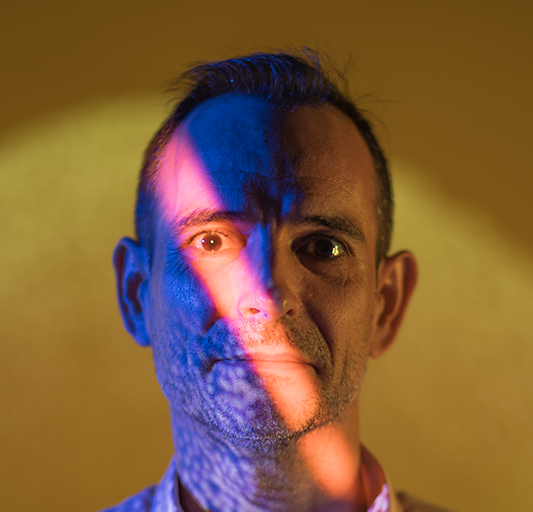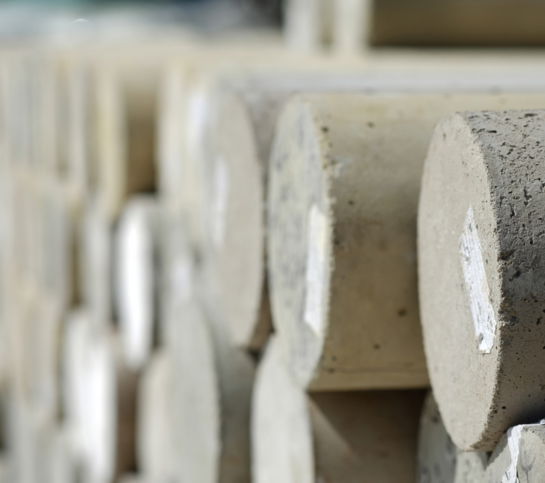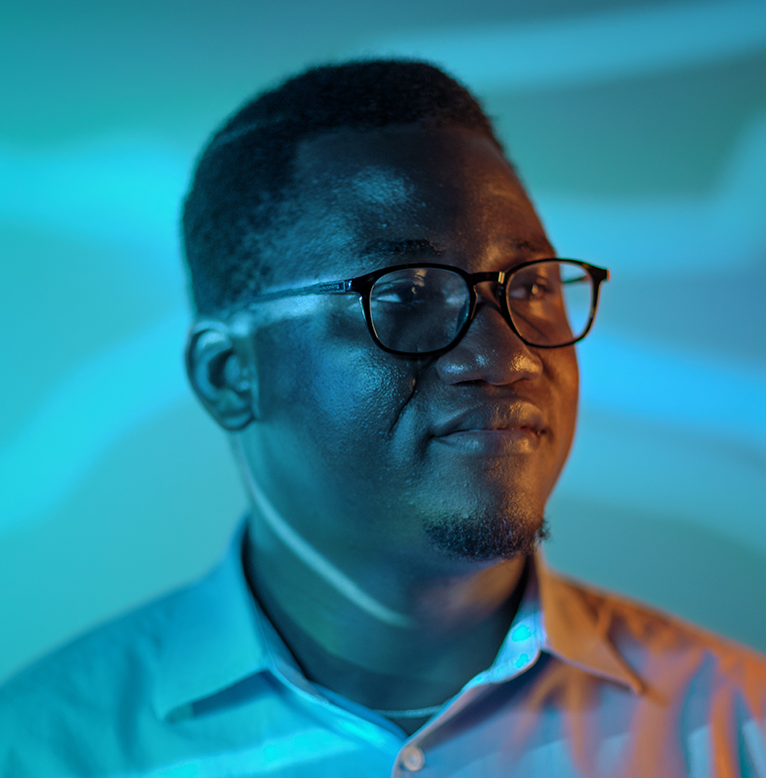JORGE GASCON
on a
mission
to reduce emissions in every building.
Sustainably Building the Future: ClimateCrete’s Vision
Jorge Gascon
- Professor of Chemical Engineering
- Chair, KAUST Catalysus Platform
- Energy Strategy Advisor, National Transformation Institute (NTI)
- Physical Science and Engineering Division
“The world is running out of sand — good sand that can be used for construction.”
A chemical engineer with deep expertise in energy, Professor Jorge Gascon recalls this comment from a conversation with renowned architect William McDonough, a distinguished research professor at King Abdullah University of Science and Technology (KAUST). The exchange would impact his career beyond academia into the world of start-ups and sustainable building.
“That night, I emailed two of my team members, Dr. Anastasiya Bavykina and Dr. Juan Manuel Colom Díaz, copying Bill,” Gascon says, smiling. “The subject line read ‘crazy idea.’ I asked them to pick up some sand, bring it to the lab, and test a few treatments. That’s how it all started. We still have that email.”
Being able to solve a problem and to have that solution applied at a larger scale — I can’t imagine anything better.
Jorge Gascon

With only 5% of the world’s sand suitable for concrete, the experiment was the beginning of ClimateCrete — a KAUST start-up contributing to the Kingdom’s giga-projects, using local materials as affordable and sustainable building blocks. Its process reduces emissions by converting local sand and excavation waste into construction-grade aggregates.
Two years later, ClimateCrete has grown into a thriving Silicon Valley-based venture with plans to enter the $400 billion construction aggregates market by offering a sustainable, low-cost product. “We need to decrease emissions in every single building, and that cost cannot be passed to the buyer of the building,” Gascon says. “T]his is our concept, and this is exactly what we are doing. Only at a place like KAUST can a chemical engineering professor like me sit down with an architect and discuss these things.”
WATCH VIDEO
Professor Jorge Gascon
Local solutions
Saudi Arabia’s large construction projects often require sand transported from up to 200 kilometers away, which drives up emissions and costs. Ultimately, Gascon says, sustainability must be local. Drawing on decades of research in energy catalysis, Gascon began testing treatments to make local sand and excavation waste usable for construction. “At the end of the day, it’s all chemistry. You apply it in different directions, and sometimes it takes you to places you never thought.”
Today, the KAUST start-up he cofounded with McDonough, Bavykina, and Díaz is partnering with major Saudi contractors to validate upgraded sand. “If we keep expanding at our current pace, I see us playing a major role across the Kingdom’s giga-projects, transforming materials that would otherwise be discarded into high-value resources for construction, and helping reduce emissions and costs in the process. I also see us expanding internationally.”
Building the right team
As the chief technology officer (CTO) for a company turning local sand into sustainable construction aggregate, Gascon often emphasizes that researchers cannot succeed in entrepreneurship alone. The first step, he says, is creating a strong ecosystem with the right expertise.
“Scientists cannot do it all. We need a good CEO, good CTOs, and good lawyers to help with due diligence. We also need excellent Saudi general managers who can navigate the Kingdom’s environment. You may have the most brilliant idea in the world, but if you try to commercialize it by yourself without the appropriate team, you are going to keep hitting doors.”

When ClimateCrete emerged as an export-ready Saudi solution, its founders brought in Peter Hadrovic, a veteran Silicon Valley executive, as its first CEO. Gascon considers the decision crucial to the company’s current momentum.
“I have a great deal of respect for the work our CEO does, just as he respects what KAUST brings to the table. We have an unwritten agreement: the business side is his, the technical side is ours. It works really well. I truly believe a large part of ClimateCrete’s success comes down to the choices we made at the very beginning and from understanding that we needed to adapt to the local ecosystem. Colleagues often ask me how to manage their start-ups. I always tell them to find a good CEO and an excellent general manager, let them do their job, and stay out of their way.”
Mission for impact
Academics are often measured by how many high-profile papers they publish. For Gascon, who is motivated by solving real-world problems, the thrill lies elsewhere. “The excitement of seeing knowledge developed in the lab applied at a large scale is like when you publish your first Nature or Science article, but more intense. I’m really an engineer at heart. I love to solve problems. This is what drives me to work every day.”
ClimateCrete reflects that impact-driven mission. The start-up tackles challenges in Saudi Arabia and beyond through science and innovation: upgrading sand, repurposing excavation waste for construction, and even exploring applications in the energy sector. Gascon sees broad possibilities, showing how KAUST research can transform industries and lives.
“Being able to solve a problem and to have that solution applied at a larger scale — I can’t imagine anything better,” he says. “I'm on a mission to make building the future sustainable.”
Learn more about KAUST and our mission-driven research
KAUST shall be a beacon for peace, hope and reconciliation, and shall serve the people of the Kingdom and the world.
King Abdullah bin Abdulaziz Al Saud, 1924 – 2015
Email: global.pr@kaust.edu.sa
Mailing address:
4700 King Abdullah University of Science and Technology
Thuwal 23955-6900
Kingdom of Saudi Arabia
FOLLOW US
© 2025 King Abdullah University of Science and Technology. All rights reserved.


